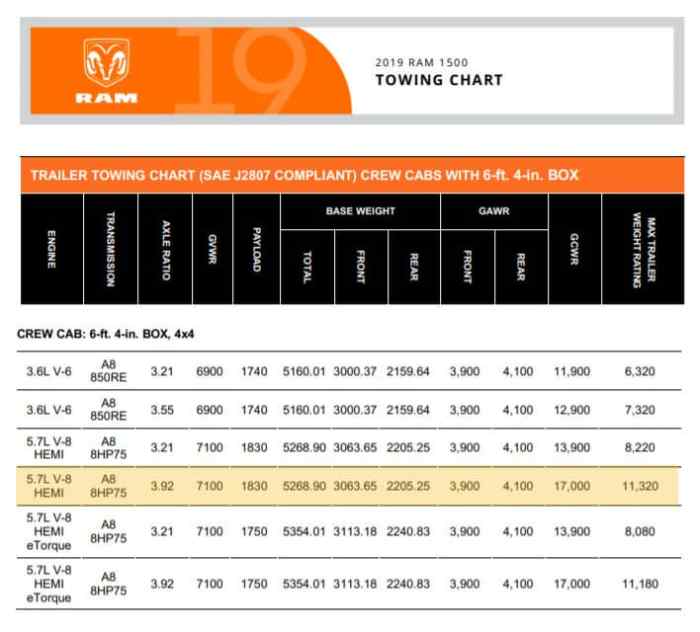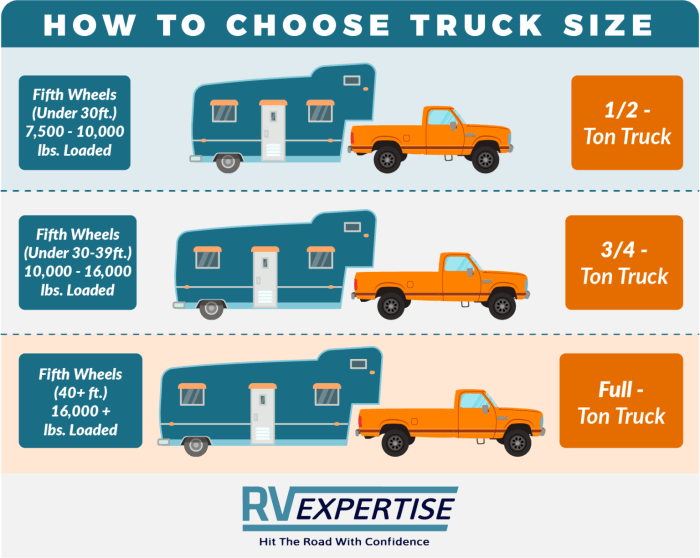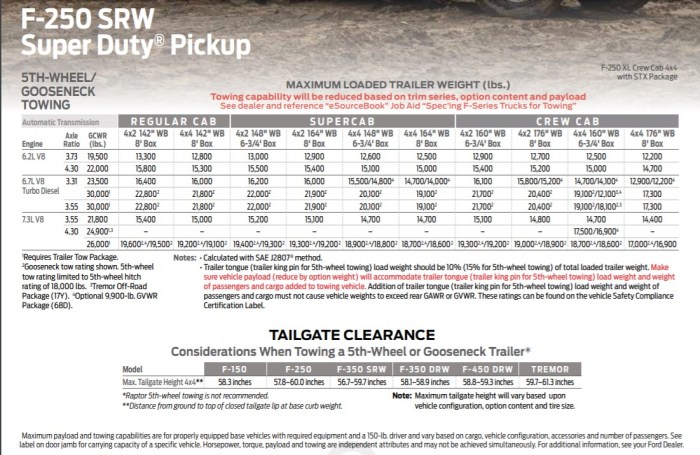How to calculate payload capacity for trucks? It’s a question every trucker, logistics manager, and even the occasional DIY weekend warrior hauling a massive load needs to know. Getting this wrong can lead to hefty fines, safety hazards, and potential mechanical damage to your rig. This guide breaks down the process, from understanding GVWR (Gross Vehicle Weight Rating) to navigating legal weight limits and optimizing your load for maximum efficiency and safety.
We’ll cover everything you need to know to make sure your next haul is legal, safe, and doesn’t leave you stuck on the side of the road.
We’ll delve into the nitty-gritty of weighing your truck, factoring in everything from fuel and passengers to those extra-heavy-duty toolboxes. We’ll also explore how different cargo types and loading techniques impact your payload capacity. Think of it as your ultimate cheat sheet for maximizing your hauling potential while staying within the law. Buckle up, it’s going to be a ride!
Understanding Gross Vehicle Weight Rating (GVWR): How To Calculate Payload Capacity For Trucks
The Gross Vehicle Weight Rating (GVWR) is a crucial specification for any truck, representing the maximum allowable weight of the vehicle when fully loaded. Understanding GVWR is fundamental to safe and legal operation, directly impacting payload capacity and preventing overloading, which can lead to serious mechanical issues, accidents, and legal repercussions. It’s the absolute maximum weight your truck should ever reach, encompassing everything from the truck itself to its cargo and any additional equipment.GVWR Components and Their SignificanceThe GVWR is the sum of several key components: the vehicle’s curb weight (or unladen weight), the payload capacity, and any additional equipment weight.
Let’s break down each component:
Curb Weight
Curb weight refers to the weight of the vehicle itself without any cargo, passengers, or additional equipment. This includes the chassis, engine, body, and all standard factory-installed components. Manufacturers provide this information, typically found in the owner’s manual or on the vehicle’s identification plate.
Payload Capacity
This is the maximum weight of cargo, passengers, and any additional equipment that can be safely added to the truck without exceeding the GVWR. It’s calculated by subtracting the curb weight from the GVWR. For example, a truck with a GVWR of 10,000 lbs and a curb weight of 6,000 lbs has a payload capacity of 4,000 lbs.
Additional Equipment Weight, How to calculate payload capacity for trucks
This includes any extra items added to the truck, such as a camper shell, toolboxes, winches, or specialized equipment. It’s critical to include this weight when calculating the total weight to ensure you remain within the GVWR limits.
Figuring out a truck’s payload capacity is pretty straightforward: subtract the truck’s curb weight (weight without cargo) from its GVWR (gross vehicle weight rating). Knowing this is key when you’re shopping for a used truck, especially if you’re on a budget. Check out this list of Most reliable used trucks under $20k 2025 to find one that meets your needs.
Then, double-check the specs to make sure the payload capacity aligns with what you plan to haul.
GVWR Variation Across Truck Types and Sizes
GVWR varies significantly depending on the truck’s size, class, and intended use. A small pickup truck will have a much lower GVWR than a heavy-duty semi-truck. For example, a light-duty pickup truck might have a GVWR around 6,000 lbs, while a Class 8 semi-truck can have a GVWR exceeding 80,000 lbs. This difference reflects the substantial variations in structural strength, engine capacity, and axle configurations.
GVWR Comparison Across Truck Classes
The following table illustrates the typical GVWR, payload capacity, and vehicle weight for different truck classes. Note that these are approximate values and can vary significantly depending on the specific make, model, and configuration of the vehicle.
| Truck Class | GVWR (lbs) | Typical Payload Capacity (lbs) | Typical Vehicle Weight (lbs) |
|---|---|---|---|
| Class 2 | 8,500 – 10,000 | 3,000 – 5,000 | 5,500 – 5,000 |
| Class 3 | 10,001 – 14,000 | 4,000 – 8,000 | 6,001 – 6,000 |
| Class 4 | 14,001 – 16,000 | 8,000 – 12,000 | 6,001 – 4,000 |
| Class 8 | 33,001 – 80,000+ | 20,000 – 60,000+ | 13,000 – 20,000+ |
Calculating Vehicle Weight
Accurately determining your truck’s weight is crucial for safe and legal operation. Understanding the weight of your vehicle, including its cargo and any added equipment, allows you to stay within your GVWR and avoid potential fines or accidents. This section details methods for precisely calculating your truck’s total weight.Accurate weight determination involves several steps and considerations. Ignoring even seemingly minor weight contributions can lead to exceeding your GVWR, resulting in safety hazards and legal issues.
Let’s break down the process.
Methods for Accurately Weighing a Truck
There are several ways to accurately determine your truck’s weight. The most reliable method involves using a certified truck scale at a weigh station or trucking facility. These scales provide a precise measurement of the gross vehicle weight. Alternatively, you can use a portable axle scale, which measures the weight on each axle individually, allowing you to calculate the total weight.
Keep in mind that portable scales are less precise than stationary truck scales. Finally, some companies offer mobile weighing services that bring the scale to your location.
Impact of Added Accessories and Equipment on Vehicle Weight
Adding accessories like toolboxes, winches, or aftermarket bumpers significantly impacts your truck’s overall weight. Each additional item adds to the curb weight, reducing the available payload capacity. For example, a heavy-duty toolbox might weigh several hundred pounds, while a winch and its mounting bracket could add another hundred or more. It’s essential to weigh your truckafter* installing any accessories to determine the exact impact on your payload capacity.
Remember to consult the manufacturer’s specifications for the weight of each accessory.
Calculating the Weight of Fuel, Cargo Securing Equipment, and Driver/Passengers
Fuel weight is easily calculated using the truck’s fuel tank capacity and the density of the fuel (approximately 6.3 pounds per gallon for gasoline or diesel). Cargo securing equipment, such as straps, chains, and winches, adds to the overall weight and should be factored into your calculations. Similarly, the weight of the driver and passengers should be included.
A reasonable estimate for a driver is 175 pounds, with passengers adding an additional 150-175 pounds each.
Figuring out a truck’s payload capacity is pretty straightforward; you subtract the truck’s curb weight from its GVWR (Gross Vehicle Weight Rating). But before you haul that mountain of textbooks, check out this comparison of Ford F-150 vs Chevy Silverado reliability 2025 to make sure you’re getting a reliable rig. Knowing the reliability helps you estimate how much you can safely load, since a breakdown means lost payload capacity and a huge headache.
Step-by-Step Guide for Calculating Vehicle Weight
Accurately calculating your truck’s weight requires a systematic approach. Follow these steps to ensure you have an accurate assessment:
- Weigh the empty truck: This is your truck’s curb weight. Use a certified truck scale for the most accurate reading.
- Weigh each accessory: Individually weigh all added accessories (toolboxes, winches, etc.) and record their weights.
- Calculate fuel weight: Determine the weight of the fuel in your tank by multiplying the tank’s capacity (in gallons) by the fuel’s density (approximately 6.3 pounds per gallon).
- Calculate cargo securing equipment weight: Weigh all cargo securing equipment (straps, chains, etc.) to determine its total weight.
- Estimate driver and passenger weight: Include the weight of the driver (approximately 175 pounds) and any passengers (approximately 150-175 pounds each).
- Calculate total weight: Add the curb weight, accessory weights, fuel weight, cargo securing equipment weight, and driver/passenger weight. This is your Gross Vehicle Weight (GVW).
Total Vehicle Weight = Curb Weight + Accessory Weight + Fuel Weight + Cargo Securing Equipment Weight + Driver/Passenger Weight
Determining Payload Capacity

Okay, so we’ve figured out the GVWR (Gross Vehicle Weight Rating) and weighed our truck. Now, let’s get to the good stuff: calculating how much stuff we can actually haul. This is all about understanding payload capacity, which is essentially the difference between what your truck
- can* carry and what it
- already* weighs.
The core formula is pretty straightforward: it’s all about subtraction. We’re taking the maximum weight your truck is designed to handle (GVWR) and subtracting the truck’s current weight (including everything already on board).
Payload Capacity Calculation Formula
The formula for determining payload capacity is:
GVWR – Vehicle Weight = Payload Capacity
Let’s break it down with some real-world examples. Imagine you have a pickup truck with a GVWR of 6,000 lbs. After weighing the truck (empty, with a full tank of gas, and the driver), you find it weighs 4,000 lbs. Therefore, the payload capacity is 6,000 lbs – 4,000 lbs = 2,000 lbs. You can safely carry a maximum of 2,000 lbs of cargo in this truck.
Another example: a semi-truck might have a GVWR of 80,000 lbs and a vehicle weight of 35,000 lbs, resulting in a payload capacity of 45,000 lbs.
Payload Weight Management Best Practices
Proper payload management is crucial for safety and legal compliance. Overloading your truck can lead to serious consequences, including accidents, fines, and damage to your vehicle. Here’s how to stay on top of it:Always weigh your truck and cargo before each trip, especially if you’re hauling varying loads. Use certified scales for accurate measurements. Distribute weight evenly across all axles to prevent overloading any single axle.
Keep detailed records of your loads and weights for auditing purposes. Regularly inspect your tires, brakes, and suspension for signs of wear and tear due to heavy loads. Never exceed the GVWR or any axle weight limits.
Factors Affecting Payload Capacity
Several factors can impact your truck’s payload capacity beyond just the GVWR and vehicle weight. Understanding these can help you make informed decisions about your loads.
- Terrain: Driving uphill requires more power and puts more stress on the vehicle, effectively reducing the safe payload capacity.
- Weather Conditions: Heavy rain or snow can significantly increase the weight of your vehicle and reduce traction, leading to a lower safe payload.
- Altitude: At higher altitudes, air density is lower, which can slightly reduce engine performance and impact payload capacity.
- Additional Equipment: Adding things like a snow plow or a camper shell will increase the vehicle’s weight, thus reducing the payload capacity.
- Cargo Type: The density and distribution of the cargo can also influence the effective payload capacity.
Payload Capacity and Legal Regulations

Staying within legal weight limits is crucial for safe and legal trucking operations. Exceeding these limits can lead to serious consequences, impacting both your business and public safety. Understanding these regulations and how they interact with payload capacity is essential for any trucking professional.Understanding the legal framework surrounding truck weight limits is vital for responsible operation. These regulations vary significantly depending on location (state, province, or country), the class of the truck, and the type of roadway.
Failure to comply can result in hefty fines, operational delays, and even legal action. Proper load distribution is equally important, ensuring stability and preventing accidents.
Legal Weight Limits and Their Consequences
Weight limits for trucks are established by federal and state governments in the USA. These regulations define the maximum permissible gross vehicle weight (GVWR), axle weight, and overall dimensions for different vehicle classes. Exceeding these limits can lead to significant penalties, including fines, vehicle impoundment, and suspension or revocation of operating permits. Moreover, overloading can compromise vehicle stability, leading to accidents, injuries, and potential property damage.
Insurance companies may also deny coverage for accidents caused by overloading. These consequences underscore the importance of accurate payload calculations and adherence to legal restrictions.
Load Distribution and Stability
Proper load distribution is paramount for maximizing payload capacity while maintaining vehicle stability. An unevenly distributed load can shift the center of gravity, making the vehicle more prone to rollovers, especially on curves or uneven terrain. Strategically placing heavier items lower and closer to the center of the vehicle helps to improve stability. Load securing techniques are also critical, preventing shifting during transit.
Consider using load binders, straps, and other securing devices to keep the cargo firmly in place. Following best practices for load distribution not only enhances safety but also allows you to legally carry the maximum possible payload within the weight limits.
US Truck Class Weight Limits (Example)
It’s important to note that these are example values and can vary by state and specific vehicle configurations. Always consult the relevant state and federal regulations for accurate and up-to-date information.
| Truck Class | Axle Weight Limits (lbs) | Gross Vehicle Weight Limits (lbs) |
|---|---|---|
| Class 2 | 10,000-20,000 (varies by axle configuration and state) | 14,000-33,000 (varies by state) |
| Class 3 | 10,000-34,000 (varies by axle configuration and state) | 26,000-50,000 (varies by state) |
| Class 4 | 10,000-34,000 (varies by axle configuration and state) | 50,000-60,000 (varies by state) |
| Class 8 | 34,000 (single axle), 60,000 (tandem axle) | 80,000 (varies by state and configuration) |
Impact of Cargo Type and Loading Techniques

Payload capacity isn’t just about the total weight; it’s also significantly impacted by thetype* of cargo and how it’s loaded. Different materials have different densities and shapes, influencing both the weight distribution and the overall stability of the truck. Proper loading techniques are crucial for maximizing payload while ensuring safe transportation.
Cargo Type and Density Effects on Payload
Dense cargo, like bricks or metal ingots, allows for a higher weight within a given space. Conversely, bulky cargo, such as furniture or oversized boxes, occupies more volume for the same weight, reducing the effective payload capacity. For example, a truck might carry 10,000 lbs of bricks but only 5,000 lbs of fluffy pillows, even though the volume occupied by the pillows is significantly greater.
This highlights the importance of considering both weight and volume when calculating payload. The density of the cargo directly impacts how much weight the truck can safely carry.
Best Practices for Loading and Securing Cargo
Optimizing payload and safety requires careful consideration of loading techniques. Distribute weight evenly across the truck bed, avoiding concentration in any one area. Secure cargo using appropriate tie-downs, straps, and other restraints to prevent shifting during transit. Heavier items should generally be placed lower and towards the center of gravity of the vehicle. Properly securing cargo not only protects the goods but also significantly enhances the vehicle’s stability and reduces the risk of accidents.
Overloading a truck, even if within the GVWR, can lead to instability if the load isn’t properly secured.
Effects of Improper Loading Techniques
Improper loading can lead to several negative consequences. Uneven weight distribution can cause the truck to handle poorly, increasing the risk of rollovers, especially on curves or uneven terrain. Unsecured cargo can shift during transit, potentially causing damage to the goods, the truck itself, or even other vehicles on the road. In extreme cases, unsecured cargo can lead to accidents due to shifting weight affecting the vehicle’s stability.
For instance, a truck carrying unsecured lumber could experience a significant shift in weight during braking, leading to a loss of control.
Weight Distribution and its Effect on Payload Capacity
Weight distribution is paramount for safe and efficient payload utilization. A properly distributed load evenly distributes the weight across all axles, maximizing the use of the truck’s allowed weight limits. This leads to improved handling, braking, and stability. In contrast, a poorly distributed load can overload specific axles, exceeding their weight limits and potentially leading to damage or even failure.
Imagine a truck carrying a heavy load concentrated at the rear. This would significantly overload the rear axle, compromising handling and stability, even if the total weight is below the GVWR. A properly distributed load, on the other hand, would evenly spread the weight, ensuring all axles operate within their safe limits. This is often achieved by strategically placing heavier items lower and towards the center, balancing them with lighter items towards the outside and higher up.
This ensures a stable center of gravity and optimized weight distribution across the axles.
Summary
Mastering payload capacity calculations isn’t just about avoiding tickets; it’s about ensuring the safety of yourself, your cargo, and other drivers on the road. By understanding GVWR, accurately weighing your vehicle, and applying the correct formula, you can confidently maximize your hauling capacity while adhering to all legal regulations. Remember, a properly loaded truck is a safe truck, and a safe truck is a successful truck.
So, hit the road knowing you’ve got the knowledge to keep things rolling smoothly.









